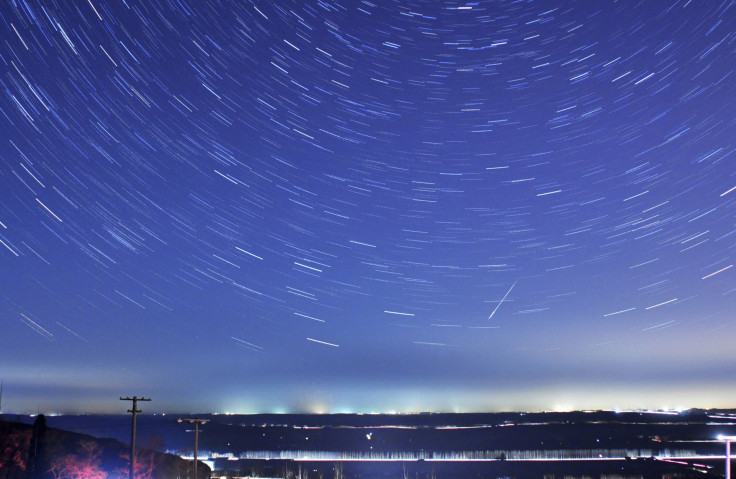Lyrids 2015 Live Stream: Watch The Lyrid Meteor Shower Peak Anywhere In The World; Viewing Tips

The Lyrids will light up the night sky for Earth Day 2015. The annual Lyrid meteor shower will not have to compete with the moon when it reaches its peak Wednesday. If you can't escape the bright lights -- or can't stay up late -- Slooh and NASA have Lyrids live streams beginning at 8 p.m. EDT.
The Lyrid meteor shower is caused by space debris left behind by Comet C/1861 G1 Thatcher. Each year, Earth passes through the dust and rocks from the comet. These bits burn up in the atmosphere as meteors. The shooting stars are not particularly fast or abundant, but this will be the last meteor shower before the Perseids that will not be hindered by moonlight.
"This year the moon will be a waxing crescent only 1/15th the brightness of a full moon, and it will set early, allowing excellent dark sky conditions for this shower. Typically, Lyrids produce a gratifying number of fireballs, which is surprising since their moderate speed of 30 miles per second is only about 75 percent that of the August Perseids or November Leonids. This should be an exciting experience," Slooh astronomer Bob Berman said in a statement.
Watching the Lyrids is easy enough. Find a dark place and settle in, beginning around 10:30 p.m. local time. The best viewing will be after midnight, but you should see some meteors sooner. After adjusting your eyes, look for the constellation Lyra -- using the brightness of Vega will help -- and enjoy the show. Europe will have the best vantage point for the spring meteor shower.
Slooh's Lyrid meteor shower live stream begins at 8 p.m. EDT and originates from its observatory in the Canary Islands. The broadcast will include views from telescopes and a radio audio feed so viewers can listen to the meteor shower.
NASA's Lyrid meteor shower broadcast begins at 10 p.m. EDT and originates from the Marshall Space Flight Center in Alabama.
© Copyright IBTimes 2024. All rights reserved.






















